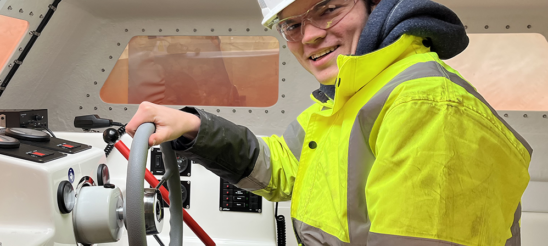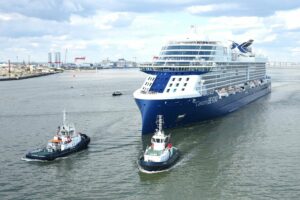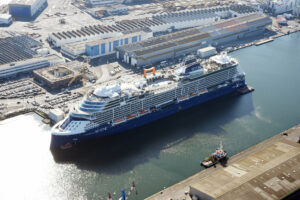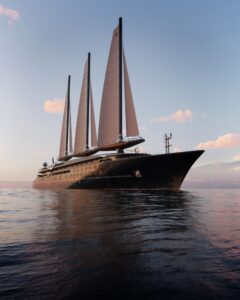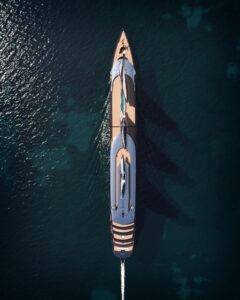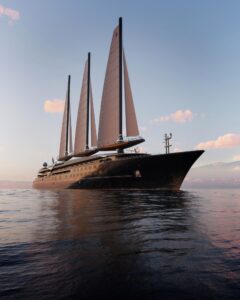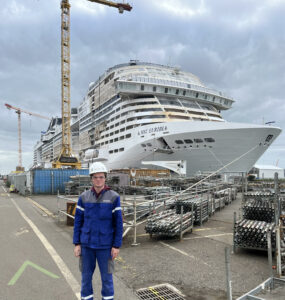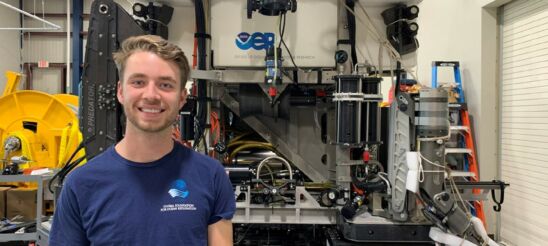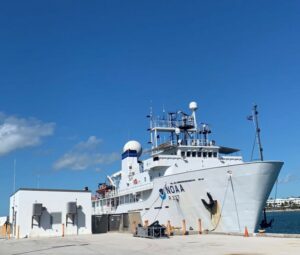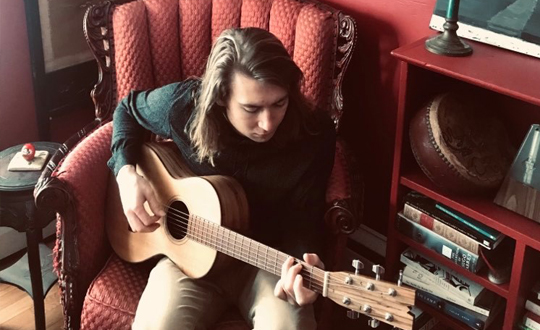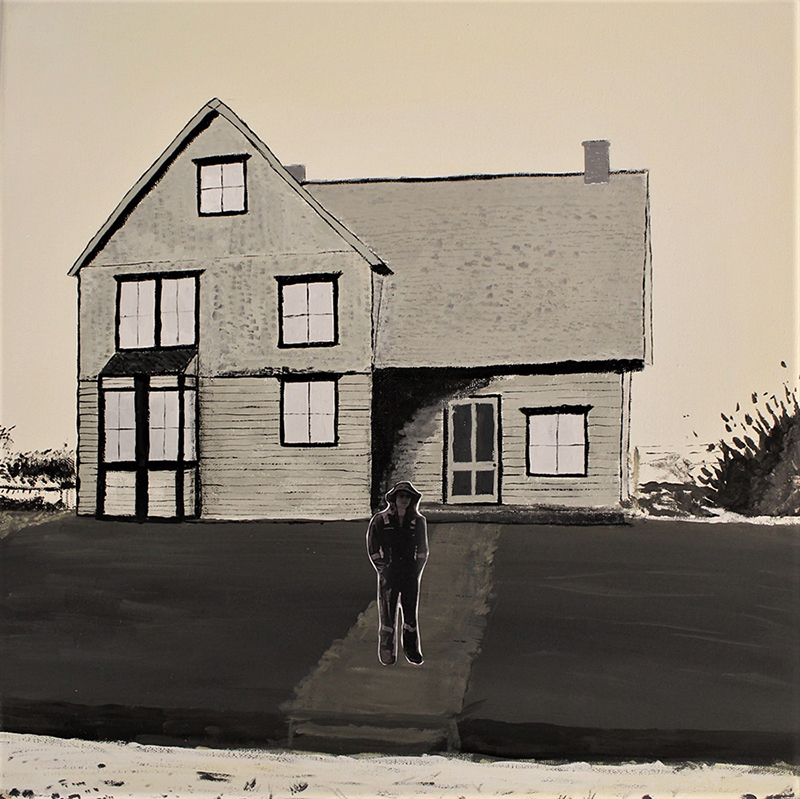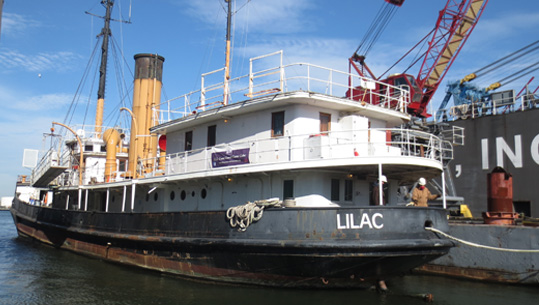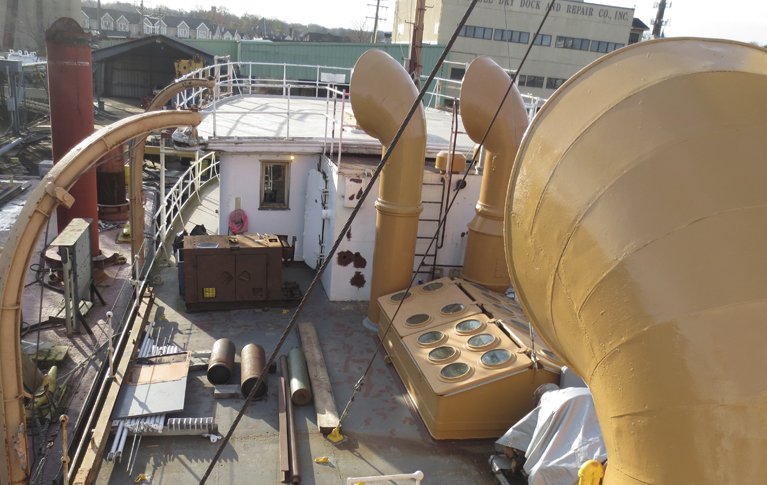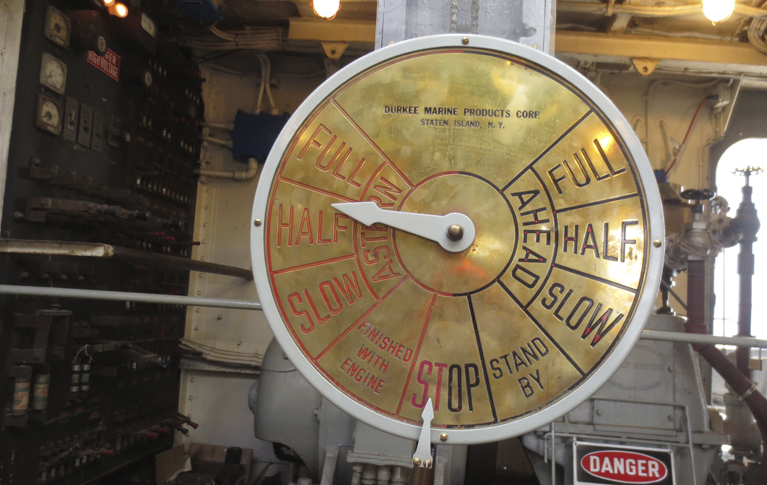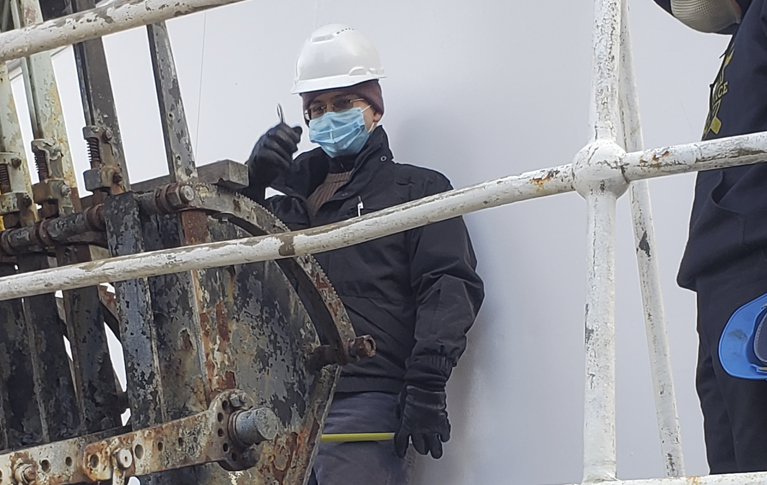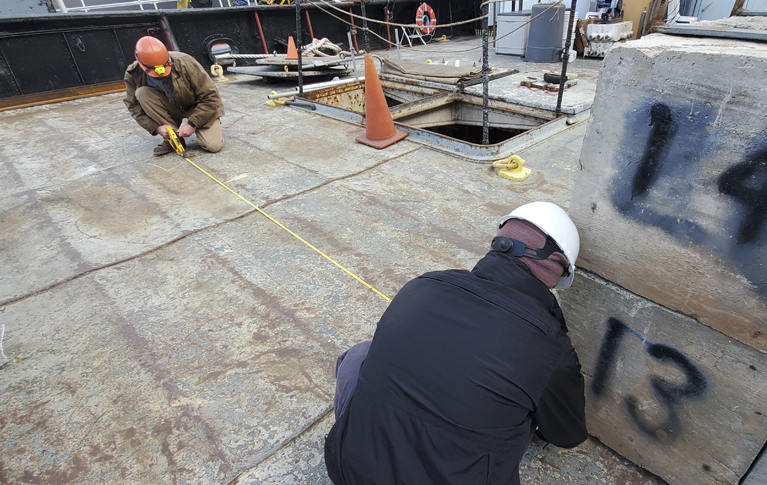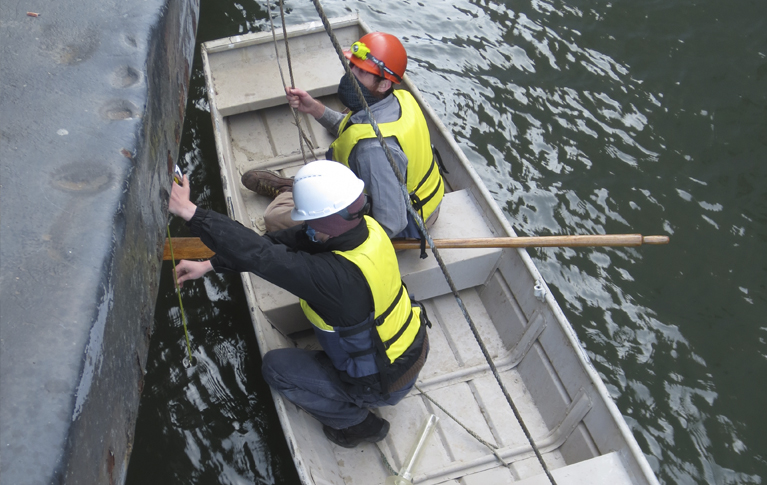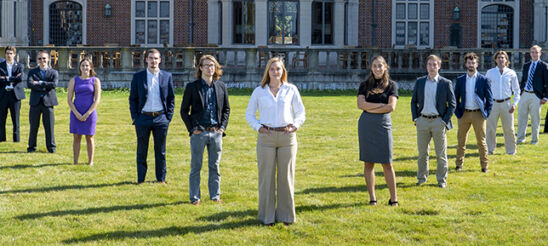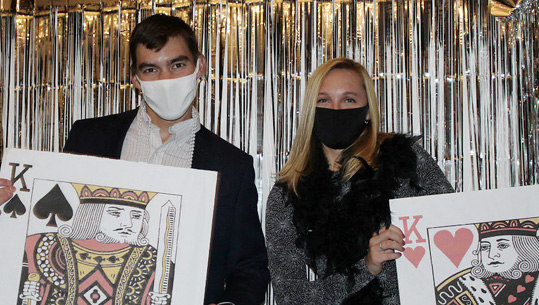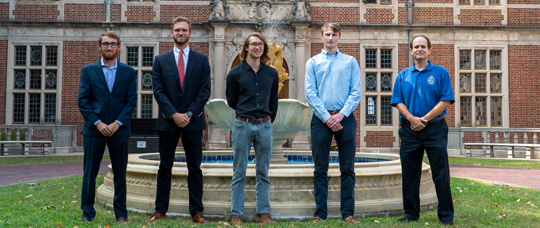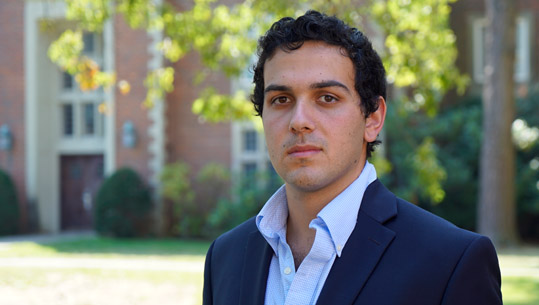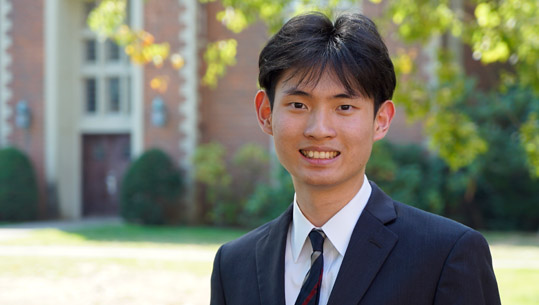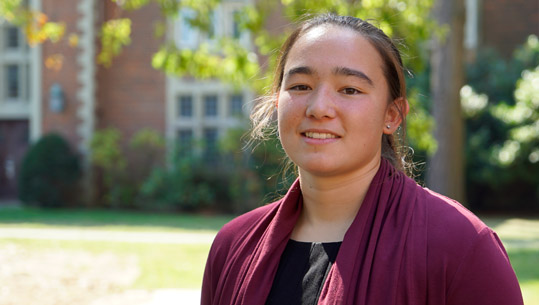Webbies are taking on their Winter Work internships fearlessly, and they have started a blog to share their experiences and insights with us.
The blog will cover a range of topics from the skills they have learned to the personal growth they have experienced throughout their time in the program.
Our first blog post is written by Paul Ferragu, a Freshman at Webb who is currently at the prestigious Chantiers de l’Atlantique for his Winter Work internship. Paul shows us that no matter where you are in life, with the right mindset, you can do anything and go anywhere.
Follow along with us on the journey!
Where are you working for the Winter Work term?
I’m spending my freshman Winter Work Term at the Chantiers de l’Atlantique in Saint-Nazaire, France.
Why are you interested in this company?
I was originally interested in this company because they design and build the world’s largest cruise ships for leading cruise lines and are at the front of innovation toward sustainable shipping. Although I don’t have a passion for cruise ships, their complexity is certainly fascinating. Everything I learn here will be applicable in almost every other sector of the industry. My personal favorite project they are working on is the Solid Sail.
How is the work environment?
I am part of an outfitting supervising team. I joined a team of 7 who specializes in supervising the outfitting of anything welded or attached to the metallic hull of the ship. This includes life-saving apparatuses, strategic fire-fighting equipment, mooring decks, hydraulic doors, machinery, and balconies. During my winter work term, I will be supervising the installation of some life-saving apparatuses.
What skills are you learning at the company?
I am learning technical French terminology and the logistics behind such a large and complex shipyard – there can be up to 8,000-10,000 personnel in the yard at a time and up to 4 ships under construction. There is activity 24/7 in the yard, and thousand-ton blocks are being lifted on an almost daily basis. I am also taking this opportunity to ask questions about the design process of ships. It takes 500 engineers and technicians to realize all the different ship’s plans fully. I am able to help my team with translating English to French and teaching them English terminology to ease their communication with contractors.
Why are you the best candidate for this internship?
I showed interest in learning from the world’s leading passenger ship shipyard and my French language skills enabled me to do my job in the language spoken daily within my team and with contractors. Some overseas shipyards can accommodate English speakers but that is not standard in French yards.
Where do you see yourself after this internship (or after graduation)?
As I am only a freshman, I will return to Webb after the winter work term to explore more sectors before deciding on one to pursue during my early professional career. I do hope to come back to this shipyard in my junior year to work in the design offices of their new sail and Liquified Natural Gas (LNG) -propelled ships.
Winter Work Term: More than a Robotics Company
by Jonathan Alenn ’23
I’m sure you’ve heard the phrase “Good things come to those who wait”. When finding winter work spots, I wouldn’t recommend it, but I got lucky for my junior year internship. I still did not have a job lined up in early December when Professor Golden sent out an email saying an underwater robotics company was looking for two interns. A cover letter, interview, and acceptance letter in a couple days and I had booked my ticket for the sunny shores of central Rhode Island. Three months later and I had completed my favorite internship on the chilly shores of Key West.
The Global Foundation for Ocean Exploration (GFOE) is more than just a robotics company. They design, build, maintain, and operate some of the most sophisticated remotely operated vehicles (ROVs) in the world. They run expeditions across the seven seas searching for some of the world’s most isolated plants, animals, and shipwrecks. Capable of going 6000 meters deep, almost four miles, deep, GFOE has explored areas such as the Hawaiian Islands, Mid-Atlantic Ridge, and Marianas Trench.
I did my internship with Evan Spalding, a sophomore who, like me, absolutely loves to ski. We went skiing several times in Vermont and his home “mountain” of Yawgoo on a powder day. I also took trips to Newport, Maine, and Boston. Weekends were always fun to explore the Northeast in the winter for a Florida man.
I worked at GFOE’s main workshop in Quonset, Rhode Island for seven weeks. While there, I got to go hands-on almost every single day with their two largest ROVs, Deep Discoverer (D2) and Seirios. From the first day, they had Evan and I working on the different systems. The first week we completely took apart and reassembled the rock boxes and drawers on D2. After that, I worked on the hydraulics system, tracing out the different components and adjusting the manifold settings so the speeds were correct. Then using Solidworks I made from scratch an adapter piece for the new PDM cable on D2 that was put out for order a week later. One of my favorite things was to restore an old mini-sub that used to dive in Narragansett Bay. It will now be on display at the Mystic Seaport Museum. These are just a few of the things they had Evan and I doing, and we never found ourselves without meaningful and interesting work.
The highlight of the internship; however, had to be my 10 days going from Pascagoula to Key West on a “shakedown cruise” aboard NOAA’s Okeanos Explorer. All of the mission systems on board were rigorously tested to get ready for their spring and summer expeditions. I shadowed all the different team members from the deck hands, navigator, co-pilots, and winch team. I quickly fell into a pattern on board and enjoyed life on the water.
I liked it so much, I went back. This summer I was part of their expedition to the Azores Islands off the coast of Portugal for 28 days. I’m especially thankful to Professor Golden for connecting to me to this great company filled with awesome people. Even if I had to wait for it.
If You Can Design a Ship, You Can Record an Album
By Luke Herbermann ’21
When I came to Webb in the fall of 2017, I knew I would love my major and meet some great friends. I did not know that, in addition, I would find the time to record and produce my first musical album titled Take N One.
The story of the album begins before Webb, in my home state of Rhode Island. I started writing music in high school and formed a band with two friends. They were able to help me write supplemental parts to the songs I had already written for me and my guitar. Together we learned how to use proper equipment to record and produce music entirely by ourselves.
When I got to Webb, I thought I would have to put music on the back burner for a while. There is no doubt it was always second to academics, but it was not until recently when I looked back on my time at Webb that I realized how few sacrifices I was forced to make. Webb offered me convenient, yet formal, musical outlets with groups like the WooFS (Webb Family Singers) and the Webb jazz band. For our humanities elective, some of my classmates and I chose to take a music composition elective. It was in this course where I composed a “Study in Em,” the opening track to my album. In the fall of my sophomore year, I went abroad to the University of Southampton. While in England, I audited a class in songwriting and joined several music clubs to become a more polished guitar player. While doing my sea term aboard the M/V Yorktown Express, I recorded the ominous sound of crashing waves on the ship. This would be another track on my album.
Out of all of the places Webb has taken me to, the most important musical space for me has been the Webb auditorium. The auditorium is where I spend time writing music and reflecting on days both difficult and joyous. Webb has become embedded in my life and consequently in my music as well. In the fall of 2020, I managed to find a few spare minutes to set up equipment and focus on finishing recording some tunes. What ensued is a modest album that I am very proud of.
Listen to the album here:
Webbies Preserving the Past: Steamship Restoration Project
by Ian Cosic ’21
On November 19, Webb seniors Ian Cosic and Cross Weeks had the unique opportunity to conduct an inclining experiment aboard the USCG Lilac. Constructed in 1933, the Lilac is the last steam-powered lighthouse tender in the United States. For the last 17 years, she has been maintained and exhibited to the public as a museum ship by the Lilac Preservation Project, a group of dedicated volunteers working to restore the vessel and preserve her rich history.
The experiment, conducted as part of their senior thesis, consisted of a calculated series of weight shifts across the deck of the vessel to induce an angle of heel. This was then measured with three different pendulums. Before the actual shifting of the weights, Ian and Cross explored every space on the Lilac to catalogue the weight and center of gravity of every moveable object aboard the vessel. Using the data from the experiment, the students will be able to determine the vessel’s current vertical center of gravity and assess her intact stability. They hope to assist the vessel’s owners in developing a plan to modify the Lilac for eventually carrying passengers. Their thesis advisor, Professor Bradley D.M. Golden ’99, was present to assist and to provide guidance on the experiments.
The Class of 2021 Thesis Titles and Posters
In no particular order.
The Effect of Shape Change on the Added Mass Generated by an Axisymmetric Body
Jack Becker and Maggie Maguire
Added mass is the added inertia produced in a system when an accelerating body displaces the surrounding fluid particles as it moves through the fluid. In general, to achieve the added mass effect, the fluid or the object must accelerate, or the object must change shape. Cephalopods, such as octopi, can quickly and efficiently escape predators by expelling water through a cavity. This expulsion of water changes the shape of the body; moreover, it allows the creature to recover some of the generated added mass energy otherwise lost to the flow. The objective of this thesis is to analyze how shape change affects the added mass generated by an axisymmetric, deformable body to understand the performance capabilities of cephalopods.
An Investigation of Transom Stern Flow: An Evaluation of the Impact of Transom Radius
Alec Bidwell and Oscar Como
In the small-craft industry, a commonplace design standard has been to emphasize making the trailing edge of the running surface as fine and as hard-edged as possible. While it is time and cost intensive to laminate hulls with hard-edged running surfaces, it is understood that this characteristic greatly improves the handling of the vessel. On the contrary, rounding the trailing edge of the running surface has been understood to reduce performance characteristics of small-craft planing hulls. While these design characteristics are relatively known and understood within the industry, there has been no systematic testing on the topic. Additionally, the relationship between the transom radius and vessel performance has not been investigated in the context of larger, commercial vessels. We will be conducting a systematic series of experimental testing that will look at three different transom edge conditions in the application of a transom stern vessel. The three transoms include one with a 3/16” radius, one with a 1/8” radius, and finally one with a straight-edged transom. The stern wave profile and ventilation Froude Number will be determined for each transom plate, so that the effects of the various transom edge configurations can be accurately compared.
USCG LILAC Renovation: Developing a Plan to Carry Passengers on a Historic Lighthouse Tender
Ian Cosic and Cross Weeks
The USCG LILAC is a steam-powered lighthouse tender built in 1933. She is currently under the ownership of the LILAC Preservation Project which has shown interest in returning this historic vessel to service, utilizing her original equipment, to carry paying passengers on day trips up and down the east coast. Our task is to evaluate the vessel’s current intact and damaged stability and make recommendations on the least intrusive means of bringing her up to modern passenger vessel requirements for stability. This process will involve a full inclining experiment to be conducted on the LILAC. We will also evaluate the potential updates to the structure, firefighting, and lifesaving systems on board the vessel.
Airport Ferries: Feasibility Study and Concept Design of a New York Airport Ferry
Daniel Desio and Lina Tenenbaum
As a hub of commerce and traffic in the United States, the New York metropolitan area sees a large population that commutes in and out of the city. Timely and inexpensive transportation to airports is a necessity for commuters, and in New York City and the tri-state area, the travel to airports such as John F. Kennedy, LaGuardia, and Newark can be long and tedious. At the same time, the US market has become more favorable to ferry transportation. Given the higher demand for ferry transportation and the overall inefficiency of airport transportation, New York City could benefit from the inclusion of a streamlined and direct ferry service to the airports. Furthermore, our design can potentially incorporate onboard check-in and security before reaching the airport, which would provide timesaving benefits. This thesis will determine whether a ferry from New York City to one or more of the region’s airports is viable, both in terms of its cost and its timesaving capabilities. The results of the feasibility study will become requirements for a concept design.
Simulated Optimization and Feasibility of a Thermoacoustic Engine in the Marine Environment
Dillon Esposito-Kelly and Bret Sharman
Energy recovery systems have been attracting more and more attention over the past couple of decades. As technology has advanced, different methods, have been thrust into the spotlight. However, in recent years, focus has begun to shift towards the ecological footprint that these systems leave. With this focus in mind, a push towards a clean alternative of waste heat recovery has been in the forefront of future innovation. Thermoacoustic systems are one such method to achieve an environmental waste heat recovery system. We will be developing a computer-simulated thermoacoustic engine that will be applied to shipboard use to measure the efficiencies and compare the thermoacoustic engine with other waste-heat recovery systems.
The Design and Validation of the Equations of Motion of a Point-Wave Energy Converter Buoy
Ryan Flanagan and Inga Johansson
The demand for energy has been steadily increasing as global trade and the economy grow. Global interest in alternative methods of generating energy has been exponential in the 21st century. The next form of alternative energy generation to gain traction, as is apparent by the prototypes being launched in the United States today, are wave energy converters (WEC). According to the US Energy Information Administration, the approximate upper limit of energy potential in wave energy in our waters is 2.64 trillion kW-hr. The principal objective of this thesis is to validate the methodology developed in the thesis titled An Improved Methodology for PWEC Control System Design (Danilczyk and Petersen, 2007) This will be done by building and testing a linearly scaled buoy model in the Robinson Model Basin, using the wavemakers.
Design and Testing of Navigation Software for a Small Autonomous Surface Vessel
Max Haland
Autonomous Surface Vessels (ASVs) conduct missions with little to no direct human guidance. This is currently a very important field of development in naval architecture and marine engineering and will completely change the industry over the next several decades. One particular area of focus is the development of surveying and data-collecting ASVs. Small ASVs are ideally suited for many missions of this type. Using them can lead to huge reductions in cost and staffing, and swarms of ASVs coordinated by a staffed mothership are currently being developed and tested by several different groups. Webb Institute has a very small ASV built by Isaac Kremers for his 2017 thesis. So far, the Webb ASV has not been developed sufficiently to use as equipment for other theses. The objective of this thesis is to develop navigation software for the Webb ASV so that it can be used for future theses.
The Viability of Compressed Natural Gas as Fuel: The Installation and Emissions Testing of a Dual-Fuel System for an Electronically-Timed High-Speed Diesel
Sean Healy and Luke Herbermann
In recent years, strict emissions regulations have created a challenge for the shipping industry. One of the ways to help ships abide by these regulations is to convert an existing engine to run on dual fuel. Running on dual fuel in our case means running on a mixture of about 30% diesel and 70% compressed natural gas. Our thesis is a continuation of several theses that attempted to convert an existing diesel engine to run on dual-fuel. The objective of this thesis is to use this engine and run emissions testing on it to see how well the dual-fuel system works.
Metaheuristic Algorithms in Concept Design: Optimization of Marine Electrical Systems
Ben Hunt and Alex Koziol
Ship designers have long used experience and standards to guide their solutions to problems. Automation and modern optimization software, despite their limited exposure in the maritime industry, could significantly reduce this effort, as well as help designers make trade-offs between new technologies. We are developing software that will transform an Electrical Plant Load Analysis table into a fully-defined One-Line Diagram with distribution components. From this base, algorithms are developed to optimize system layout and power production techniques for fuel use and emissions with respect to various operating conditions. This design tool will prove valuable for the Concept Phase of ship design, allowing engineers to draft and evaluate options quickly and easily.
Ride the Wind: A Seakeeping Study of the Gyroscopic Effect of the Wind Turbine Rotor on a Moored Tension Leg Platform
Jackson Juska and Addie Lindyberg
A Tension Leg Platform is a floating platform that provides stability using tensioned tendons anchored to the ocean floor. Offshore wind turbines use these because they are considered very stable; however, the gyroscopic effect of the turbine rotor introduces a new inertial element on the platform, which is not yet fully understood. The objective of this thesis is to study the inertial effect that the rotating blades of a wind turbine will have on the motion of a Tension Leg Platform in incident waves. To do this, we will design, build, moor, and test a turbine in the Robinson Model Basin.
A Preliminary Design of a Navy Hospital Ship to Include Epidemic/Pandemic Rapid Response
Shannon Liu
In the fight against COVID-19, the US government employed as many techniques as possible, including the deployment of the Navy’s two hospital ships to each coast. These ships were designed decades ago to provide tactical medical support, but since have been used more often for humanitarian aid and disaster response missions. The Navy has been working on replacements for these vessels, and such a design should reflect the new types of missions that Navy hospital ships have been completing. This thesis will include a design that supports rapid response for infectious disease control and treatment.
An Experimental Analysis of the Effect of Moonpool Recess Geometry on Added Resistance
Robert Maes and Henry Rouland
Moonpools are openings in ship structures that provide access to water from inside the ship. Added resistance from a moonpool is generated when a ship has forward velocity. In 2012, Samsung Heavy Industries (SHI) received a patent describing four different geometries for aft moonpool recesses designed to reduce the added resistance in a 96,000 DWT deep-water drillship. In 2019, Will Harris used a series of numerical simulations on a Series 60 hull fitted with a moonpool to derive values for the resistance reduction of each SHI moonpool geometry over a range of Froude Numbers. The objectives of this thesis are to investigate the effects of moonpool recess geometry on added resistance and to validate Harris’s analyses. Using Harris’s test matrix, experimental values for the resistance reduction will be derived through model testing in Robinson Model Basin. In addition to providing experimental data, the results of the experiments will be compared to Harris’s numerical results, providing insight into relationships between numerical and experimental evaluations of moonpool resistance and behavior.
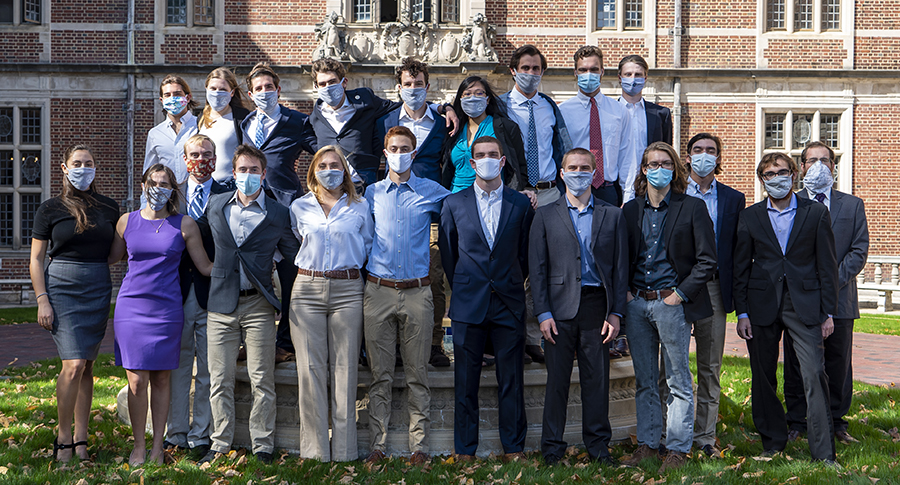
Big Winners and High Rollers at Casino Night
by Reed Stevenson ‘24
The 2020 Webb Institute Casino Night was filled with big winners and high rollers. Despite the restrictions in place due to COVID-19, the Student Social Committee (SOCO) was able to once again turn Stevenson Taylor Hall into a roaring casino, filled with plenty of games. Many students made thousands off their original 500 Webb bucks, a currency inspired by our wonderful faculty members, in games such as blackjack, poker, horse racing, roulette, and Plinko.
The evening made its way outside to the Webb tennis courts where the annual three-person horse race took place. Each class put forth a team to hopefully take home first place. With all bettings closed, the horse race began. Immediately out of the gate, the sophomore class took the lead, followed shortly by the juniors and seniors with the freshmen bringing up the rear. Each team but the sophomores had troubles keeping their horses intact, allowing for the sophomores to keep up their lead. They ended up blowing away the competition with the seniors coming in a distant second and the freshmen not far behind them. The juniors stumbled across the finish line well after the other teams had finished.
The next event was run by the seniors, where they attached a spring and handle to an oil drum to create a makeshift mechanical bull. Many tried and were flung away by the bucking oil drum. Luke Sullivan ‘23 used a unique tactic of holding on to the rear of the “bull” to secure the longest time.
The next event of the night was the arm-wrestling competition. Many competitors lined up to show off their physical prowess and prove their might in the tournament. David Ockers ‘22 secured the title of Webb arm-wrestling champion in a stunning display of strength.
Overall, casino night was a great success. Many students were able to win big and spend their winnings on the silent auction held throughout the night which would not have been possible without SOCO.
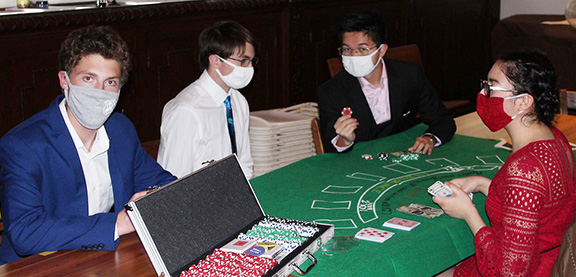
Four Webb Students win the Dr. James A. Lisnyk Student Ship Design Competition
(Pictured left to right: Benjamin Hunt, Oscar Como, Luke Herbermann, Alec Bidwell, and Professor Bradley D.M. Golden ’99)
By Professor Bradley D.M. Golden ’99
It is our pleasure to announce that Alec Bidwell, Oscar Como, Luke Herbermann, and Benjamin Hunt have won first place in this year’s SNAME Dr. James A. Lisnyk Student Ship Design Competition for their design of an LNG Bunkering Vessel. The vessel was originally designed for last semester’s SD1 course and, with only a few minor additions to their analysis, they were able to submit the same design for the Lisnyk competition.
A challenging enough project during a “regular” semester, all six groups successfully completed their designs while scattered across the country due to the COVID-19 pandemic, and all of them did very well. Alec, Oscar, Luke, and Ben went above and beyond and put in the extra effort that was required to meet the demands for the SNAME competition, and I’m very happy to see that all their hard work paid off.
According to the SNAME website, “The Lisnyk Student Ship Design Competition challenges groups of young people to design theoretical but practical cutting-edge vessels. Open to the world’s colleges and universities supporting maritime careers, the program has fostered teamwork and learning through competition.”
Dean Werner would like to add, “Congratulations to the Team, Professor Golden, and the industry advisors. The design and its presentation were very well done and quite worthy of the honor. It is always rewarding when outside groups recognize the excellent work of our talented Webb students. I hope that members of this year’s junior class see this as inspiration to enter their SD1 designs in one of the various design competitions available.”
To make this award even more special, Dr. Linsnyk was a Webb graduate from the class of 1963.
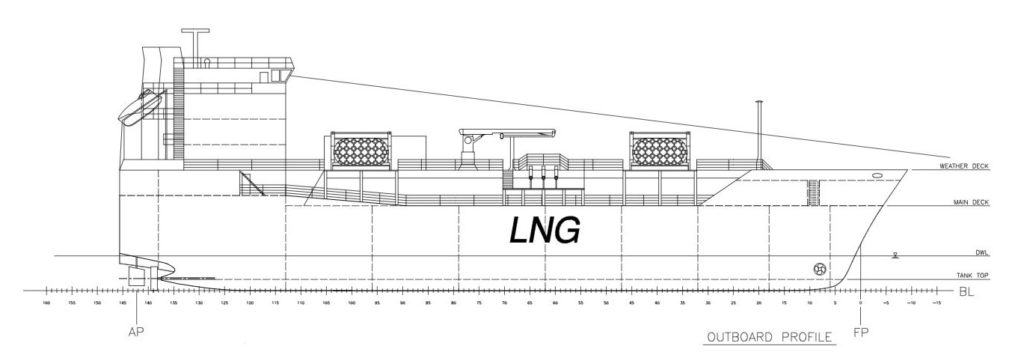
4,200 M3 LNG Bunkering Vessel
About Dr. James Lisnyk ’63 (Portions from “A Centennial History of Webb Institute of Naval Architecture”)
Born in Jamaica, New York Dr. Lisnyk was a graduate of Webb Institute of Naval Architecture. Attended MIT as SNAME Scholar receiving a MS in Naval Architecture in 1964 and joined BuShips. He earned a D.Sc. degree in Engineering Management from George Washington University in 1977. Then transferred to MARAD as Program Manager for Advanced Ship Systems then becoming Acting Director, Office of Maritime Technology in MARAD’s Office of Research and Development. Authored numerous technical papers for ASNE and SNAME; served on SNAME and ASNE governing boards; was Chairman of SNAME’s Chesapeake Section and VP of that Society. Elected VP of the Webb Alumni Association. Returned to NAVSEA in 1980, as Chief Naval Architect and Deputy Director, Hull Division. Awards include, the Department of Commerce Bronze Medal and SNAME Spring Meeting Paper Award 1979. Dr. Lisnyk was honored posthumously by having an ASME scholarship named in his memory; the Chesapeake Sect. Established the James A. Linsyk Student Design Competition Award; and NAVSEA’s Association of Senior Engineer’s named its award for its outstanding young engineer after him. Married Bridget DiGesu in 1964; two children Linda and Amy.
Tragically, he and his daughter were killed on August 1st, 1984 in an automobile accident. Dr. Lisnyk’s wife Bridget and another daughter were injured in the accident but survived.
About the Junior Class Small Vessel Design Project (SD1)
As a part of Professor Bradley D.M. Golden’s ’99 Ship Design 1 (SD1) class, the juniors spent the first two-and-a-half months of the spring semester preparing their first complete concept designs.
Using the knowledge they’ve gained in their nearly three years studying at Webb and the experiences from their winter work periods to date, this was the students’ first opportunity to apply the naval architecture and marine engineering principles they’ve studied including stability, ship’s structures, main machinery systems, auxiliary systems, resistance and propulsion, and electrical engineering.
Working in small groups of three and four, the students selected one of the vessel types and took their first couple of spins around the design spiral to prepare vessel concept designs. To help make the project as realistic as possible, members of industry familiar with each of the vessel types helped prepare the statements of design requirements that each of the designs had to meet. To challenge the students even further, one or two “curveballs” were thrown into each design statement to make the students think long and hard about how they would achieve their objectives.
At the end of the spring semester, the students presented their final designs to their fellow students, faculty, and members of industry who served as part of an evaluation team. After three years at Webb, the Junior class can now say with confidence that they’re familiar with the design process and are well on their way to joining the fields of naval architecture and marine engineering.
About SNAME:
The Society of Naval Architects and Marine Engineers (SNAME) was organized in 1893, to advance the art, science, and practice of naval architecture, shipbuilding and marine engineering. SNAME is an internationally recognized non-profit, professional society of individual members serving the maritime and offshore industries and their suppliers. For many, SNAME has been absolutely essential to career development and success in the industry. With more than 6,000 members around the world in 95 countries, SNAME is THE International Community for Maritime and Ocean Professionals! For more information, please visit: https://www.sname.org/
Senior Spotlight: Matthew Migliozzi ’20
Hometown: Chatham, NJ
Thesis Title: A Thermodynamic Exergy Analysis to Optimize a Combined Brayton-Rankine Cycle
Post Graduate Plans: Graduate work in Shipping, Trade and Finance at Cass Business School
Favorite Quote.
“You should take the approach that you’re wrong. Your goal is to be less wrong.” – Elon Musk
What would people be surprised to know about you?
Math was my worst subject in high school. English was my best. I came to Webb because I loved ships and wanted to improve on what I perceived as my weaknesses.
Do you have any advice for incoming students?
Join the sailing team, the intercollegiate dinghy team. You have your whole life to sail big boats, but only four years to compete in intercollegiate sailing. This team gives you the opportunity to compete in an intercollegiate sport and meet people from different schools with different majors and different ideas. Try to meet people with as many different perspectives as you can. Webb is great, but everyone is a Naval Architect. It is refreshing and beneficial to speak with people with different backgrounds that will challenge you to think differently. Take the time to develop your own thoughts and think deeply to ensure they’re your own. My hardest moments at Webb were when I forgot this, and being part of the sailing team helped me remember.
What was your favorite class at Webb and why?
Ship Design II because in that class, for the first time, I felt like I understood what it meant to design a ship. The class was a lot of work, but it solidified a lot of the concepts I had learned in previous Webb courses which were just abstract concepts to me before Ship Design II.
Senior Spotlight: Duane Lee ’20
Hometown: Portland, OR
Thesis Title: Concept Design and Economic Feasibility Study of a Modular Underwater Apartment: A Case Study at Webb Institute
Post Graduate Plans: Aspire rotational program at ABS
Why did you choose Webb?
I wanted to study architecture at first, but after learning about Webb, I gained an interest in naval architecture and marine engineering. While I wanted to design something cool, I also liked math/science, so I thought NA/ME was a nice combination of the two. Also, I wanted to be part of the small, unique community at Webb.
What will you miss the most about Webb?
I will miss living together with my classmates. Even with numerous late-nighters, my classmates made my time here enjoyable.
What’s your favorite spot on campus and why?
My favorite spot on campus is my couch in my dorm room in STH (room #211). After a long day, I enjoyed staring out the window or at my white wall while sitting on my couch.
What was your favorite Winter Work internship?
My favorite Winter Work internship was working at Eagle Bulk in its Singapore office. The internship gave me a nice exposure to the global maritime industry. It was also fun to work and learn from people from around the world. Also, living in Singapore was a lovely experience.
What are you passionate about?
I am passionate about doing interesting and/or meaningful things. I hope to apply what I’ve learned at Webb to do cool and interesting work.
Senior Spotlight: Audra Milbitz
Hometown: Denton, Texas
Thesis Title: An Environmental and Feasibility Analysis of a Dual-Fuel System for a High-Speed Diesel Engine on a Fishing Vessel
Post Graduate Plans: BLOM Maritime
What was your favorite Winter Work internship?
My favorite winter work experience was my senior year working at BLOM Maritime in Fort Lauderdale, Florida. I enjoyed the office environment and the responsibilities I was given at the company as an intern. Another thing that made this winter work my favorite is that I was able to hang out with other Webbies, go to the beach, and get my scuba certification.
What’s your favorite spot on campus and why?
My favorite spot on campus is anywhere I can watch the sunset because the sunsets over the Long Island Sound never get old.
Do you have any advice for incoming students?
Take full advantage of your four years at Webb. Get involved with leadership, participate in the sports teams, and volunteer in the community. The workload may seem overwhelming sometimes, but don’t let it stop you from participating in the Webb community.
Favorite Quote.
“Courage is being scared to death but saddling up anyway” – John Wayne

